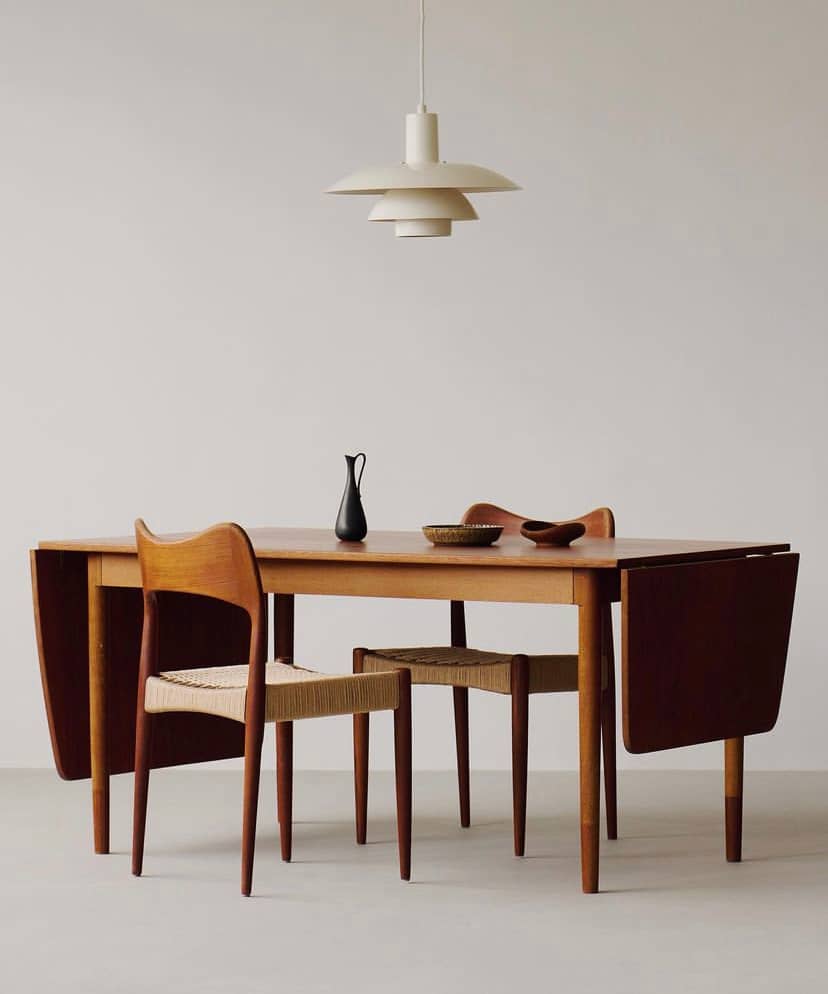Dining Room – a Comfortable Gathering Space for Your Family

When schedules are hectic and time together as a family feels fleeting, the dining room holds a special significance. It’s not just a place to eat; it’s where families come together to share. In this bustling modern lifestyle, the dining room serves as a retreat from the chaos of everyday life—a space where connections are nurtured and bonds are strengthened
Crafting a functional and inviting dining room is essential for fostering these meaningful connections within the family. Whether you have a spacious dining area that accommodates large gatherings or a cozy nook tucked away in a corner of your home, the design of your dining space plays a crucial role in shaping the atmosphere and experience it offers. It’s about more than just aesthetics; it’s about creating a space that feels welcoming and comfortable, where everyone feels at ease and eager to linger.
The dining room becomes a refuge—a place where families can slow down, savor good food, and enjoy each other’s company. With creative design ideas and practical tips, you can transform your dining room into a space that not only nourishes the body but also nourishes the soul, fostering connections and creating cherished moments that will last a lifetime.
*Affiliate Disclaimer.
This post may contain affiliate links, which means we may receive a small commission, at no cost to you,
if you make a purchase through a link.

Should We Start From the Beginning?
The dining room is a fundamental space within a home, often designated specifically for the purpose of enjoying meals together as a family or with guests. In terms of function, the dining room primarily serves as an area for dining and entertaining. It provides a designated space where individuals can gather to enjoy meals in a comfortable and sociable environment. Whether it’s a casual weekday dinner or a formal dinner party, the dining room offers a setting conducive to meaningful interaction and shared experiences.
When considering the design of a dining room, several factors come into play, including the size and shape of the room. These elements play a crucial role in determining the layout and functionality of the space. For instance, a larger dining room may accommodate a larger dining table and additional seating, making it suitable for hosting larger gatherings or dinner parties. Conversely, a smaller dining room may require more strategic planning to maximize space and ensure comfort without feeling cramped.
Design basics in a dining room encompass various aspects, from furniture selection to lighting, color scheme, and decor. The dining table and chairs are central to the room’s design, serving as both functional pieces and aesthetic focal points. The size and shape of the dining table should be chosen with consideration for the room’s dimensions and the number of people it needs to accommodate. Additionally, the style of the furniture should complement the overall design aesthetic of the room, whether it’s modern, traditional, or eclectic.
Lighting is another essential element in dining room design, as it sets the mood and enhances the ambiance of the space. A combination of ambient, task, and accent lighting can create a well-lit and inviting atmosphere for dining. Consider incorporating a statement chandelier or pendant light fixture above the dining table to add visual interest and illuminate the space effectively.
Color scheme and decor play a significant role in shaping the look and feel of the dining room. Opt for colors that evoke warmth and hospitality, such as earth tones, soft neutrals, or rich jewel tones, depending on the desired atmosphere. Incorporating elements of nature, such as plants, flowers, or natural materials, can add texture and vitality to the space, further enhancing its appeal.
How to Maximize Space in a Small Dining Room? Here Some Tips
Small dining rooms present a unique challenge when it comes to design, but with the right strategies, you can make the most of every square inch. In today’s increasingly compact living spaces, it’s essential to optimize space without compromising on style or functionality. Whether you’re dealing with a tiny apartment or a cozy nook in your home, here are some tips to help you maximize space in your small dining room:
- Utilize Multifunctional Furniture:
In small dining rooms, every piece of furniture should serve multiple purposes. Invest in multifunctional pieces such as extendable tables or nesting chairs that can be easily tucked away when not in use. Look for dining sets with built-in storage solutions, like benches with hidden compartments or tables with shelves underneath, to maximize space and reduce clutter. - Embrace Vertical Storage Solutions:
When floor space is limited, it’s essential to think vertically. Embrace wall-mounted storage solutions such as floating shelves or cabinets to free up valuable floor space. Consider installing a wall-mounted wine rack or a hanging pot rack to keep your dining essentials within easy reach without taking up precious room on the floor. - Choose a Light Color Palette:
Light colors have the power to visually expand a space, making it feel larger and more open. Opt for a light color palette for your walls, furniture, and accessories to create the illusion of space in your small dining room. Soft, neutral tones like white, beige, or light gray can help reflect natural light and make the room feel airy and inviting. - Incorporate Mirrors:
Mirrors are a powerful tool for making small spaces feel larger and brighter. Strategically place mirrors on the walls to reflect light and create the illusion of depth in your dining room. Consider installing a large mirror opposite a window to maximize natural light or placing smaller mirrors on adjacent walls to bounce light around the room and create a sense of openness.



What Are Some Family-Friendly Design Ideas for a Dining Room?
Designing a dining room with the whole family in mind requires thoughtful consideration of both functionality and style. It’s essential to create a space that not only looks great but also meets the needs of every family member, from toddlers to grandparents. Here are some family-friendly design ideas to help you create a dining room that’s both practical and stylish.
When choosing furniture for your dining room, opt for pieces that can withstand the rigors of everyday use. Look for materials that are durable and easy to clean, such as stain-resistant fabrics for chairs or tables with a scratch-resistant finish, and consider items with rounded edges to prevent bumps and bruises. Investing in high-quality, family-friendly furniture will ensure that your dining room remains looking great for years to come, even with daily wear and tear.
A round dining table is not only stylish but also practical for family gatherings. Unlike rectangular tables, which can create a hierarchy of seating, a round table promotes better conversation flow and allows everyone to engage with each other easily. Plus, with no sharp corners, it’s safer for young children and provides more flexibility for seating arrangements. My personal advise would be to always find one that is extendable – you never know how many guests you migh show up!
Comfort is key when it comes to designing a family-friendly dining room. Choose comfortable seating options like upholstered chairs or cushioned benches that invite guests to sit back and relax. Soft lighting and warm colors can help create a cozy atmosphere, while adding personal touches like family photos or artwork can make the space feel more inviting and homey.
How To Enhance Comfort and Atmosphere in Your Dining Room?
From lighting to seating, every element plays a role in shaping the ambiance of the space. Here are some tips.
Lighting sets the mood in any room, and the dining room is no exception. Instead of relying solely on overhead fixtures, consider layering different types of lighting to create a dynamic atmosphere. Combine ambient lighting with task lighting and accent lighting to provide both functionality and ambiance. Dimmer switches are also a great addition, allowing you to adjust the brightness to suit different occasions.
Comfortable seating is essential for encouraging guests to linger around the table and enjoy long conversations over meals. Choose dining chairs with padded seats and supportive backs, or opt for cushioned benches for a cozy and relaxed feel. Upholstered chairs in soft fabrics add an extra layer of comfort and elegance to the dining room.
Adding personal touches to your dining room can help create a warm and inviting atmosphere. Display family photos, artwork, or sentimental items that reflect your personality and style. Consider incorporating meaningful heirlooms or cherished objects into your decor to make the space feel uniquely yours. These personal touches will not only enhance the ambiance of the room but also create a sense of connection and belonging for you and your guests.
Bringing elements of nature into your dining room can help create a soothing and harmonious atmosphere. Incorporate potted plants, fresh flowers, or a bowl of fruit as natural accents that add warmth and freshness to the space. Consider placing a small indoor herb garden on the windowsill or hanging a botanical print on the wall to infuse the room with natural beauty and vitality.

How to Design a Dining Room Specifically for Gatherings?
Let’s be honest – as an Italian, gathering around the table with family and friends can indeed be a way of life.
So, how can you create a space that’s perfect for hosting those unforgettable gatherings and creating memories that will last a lifetime? Here are some ideas:
The layout of your dining room can make all the difference. Arrange your seating in a way that encourages conversation and connection, with chairs positioned close together to create an intimate atmosphere. Consider mixing and matching different types of seating, like chairs, benches, and even cozy armchairs, to accommodate guests of all ages and preferences.
Every great gathering space needs a focal point—a central feature that draws people in and anchors the room. For some, nowadays it could be a great screen to share some movie time – I’d prefer this to be a beautiful display of family photos, a striking piece of artwork, or even a traditional tapestry passed down through generations.
Incorporate some of your favorite family traditions and rituals into your gatherings, whether it’s cooking traditional family recipes together, sharing stories and memories, or raising a toast with a glass of homemade limoncello. These little touches will make your gatherings feel truly authentic and meaningful.
FAQs
How do I choose the right size dining table for my space?
To choose the right size dining table for your space, start by measuring the dimensions of the room, allowing for at least 36 inches of clearance around the table for comfortable seating and movement. Consider the number of people you typically host for meals and select a table size that accommodates them comfortably without overwhelming the space. If space is limited, opt for a round or square table, which tends to work well in smaller rooms and fosters better conversation flow.
How do I create a cohesive design aesthetic between my dining room and adjacent spaces?
To create a cohesive design aesthetic between your dining room and adjacent spaces, consider using a consistent color palette, coordinating furniture styles, and incorporating complementary decor elements throughout the areas. Utilizing elements like area rugs, artwork, and lighting fixtures can help tie the spaces together visually while still allowing each area to maintain its unique personality. By maintaining a sense of flow and harmony between rooms, you can create a seamless transition that enhances the overall appeal of your home.
What color schemes work best for dining rooms?
For dining rooms, consider warm and inviting color schemes such as earthy tones like taupe, olive green, or warm gray for a cozy atmosphere. Alternatively, you can opt for rich jewel tones like deep blue, emerald green, or burgundy for a more dramatic and sophisticated look. Neutral palettes with pops of color through accent pieces or artwork can also add interest without overwhelming the space, creating a timeless and versatile backdrop for any dining occasion.

In conclusion
Designing a dining room that is both functional and inviting is essential for creating a space where family bonds are strengthened and traditions are celebrated. By incorporating creative design ideas, practical tips, and personal touches, you can transform your dining room into a place where loved ones gather joyfully.
From maximizing space in small dining rooms to creating a family-friendly atmosphere and designing for gatherings, each aspect of dining room design plays a crucial role in shaping the overall experience. By prioritizing comfort, atmosphere, and functionality, you can create a space that reflects your unique style and heritage while providing a warm and welcoming environment for family and friends.
The dining room is really a special place in any home. By carefully considering the room’s size, shape, and design basics, you can create a space that not only meets your practical needs but also reflects your unique style and fosters meaningful connections with loved ones.
Now, if you’re ready to transform your dining room into a welcoming haven where unforgettable memories are made, I invite you to take the first step towards your dream space. Let’s work together to design a dining room that delights the senses, sparks joy, and brings people together. Reach out today to schedule a consultation and let’s bring your vision to life. Your perfect dining oasis awaits!
